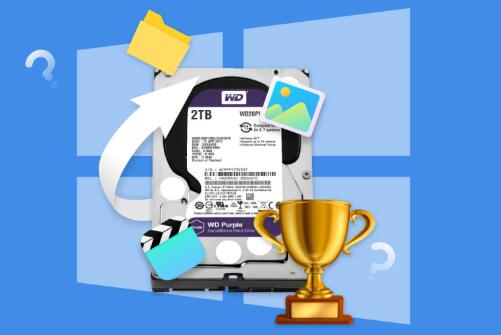DMDE (DM Disk Editor and Data Recovery Software) is a powerful tool for data recovery that allows users to retrieve lost files, repair corrupted file systems, and perform advanced disk editing.
1. Introduction to DMDE
DMDE is designed for both basic and advanced data recovery tasks. It supports a wide range of file systems, including FAT12. FAT16. FAT32. NTFS, and exFAT, making it versatile for different storage devices like hard drives, SSDs, USB flash drives, and memory cards.
2. Downloading and Installing DMDE
Download DMDE: Go to the official DMDE website and download the appropriate version for your operating system (Windows, macOS, or Linux). There is a free version available for basic recovery tasks, while the professional version offers more features.
Install DMDE: Follow the installation instructions. For Windows, this typically involves running the downloaded .exe file and following the on-screen prompts. For other operating systems, refer to specific installation instructions provided on the website.

3. Launching DMDE
Once installed, open DMDE. You’ll be greeted with a main interface that allows you to select the disk or partition you want to recover data from.
4. Choosing the Right Disk or Partition
Select Disk: In the main interface, click on the “Disk” tab to view a list of all connected storage devices. Select the disk that contains the lost or corrupted data.
Partition Selection: If your disk has multiple partitions, you’ll need to select the correct one. Use the “Partitions” tab to view and choose the appropriate partition.
5. Scanning for Lost Data
Quick Search: For a fast scan, you can use the “Quick Search” option. This method is useful for locating recently deleted files or partitions.
Full Search: For a more thorough scan, use the “Full Search” option. This is necessary if the file system is damaged or if the data was lost a long time ago. Full Search scans the entire disk or partition for recoverable files.
Searching Specific Areas: If you know the approximate location of the lost data, you can use the “Find” function to search specific sectors or regions of the disk.
6. Viewing and Recovering Files
Preview Files: Once the scan is complete, DMDE will display a list of recoverable files and folders. You can preview these files to ensure they are intact before recovery.
Select Files: Mark the files and folders you want to recover. DMDE allows you to select multiple files or entire folders for recovery.
Save Files: Click the “Save” button to begin the recovery process. You’ll be prompted to choose a destination folder on a different drive to save the recovered files. It’s crucial to save recovered files to a different drive to prevent overwriting data.
7. Repairing Partitions and File Systems
Partition Recovery: If partitions are missing or corrupted, DMDE can help recover them. Use the “Partition” tab to detect lost partitions and attempt recovery.
File System Repair: For file systems that are corrupted, DMDE offers tools to repair them. Go to the “File System” tab and select the appropriate repair options.
8. Advanced Features
Disk Editor: DMDE includes a disk editor that allows you to view and edit the raw data on the disk. This feature is useful for advanced users who need to make manual adjustments to recover data.
Hex Viewer: The Hex Viewer provides a low-level view of the disk’s data. This can be helpful for diagnosing and recovering data from severely damaged disks.
MD5/SHA1 Checksum: For verifying the integrity of recovered files, DMDE offers checksum calculation. This ensures that files have not been corrupted during recovery.
9. Troubleshooting Common Issues
No Data Found: If DMDE cannot find your data, double-check that you’re scanning the correct disk or partition. Consider using the “Full Search” option for more comprehensive scanning.
File Corruption: If recovered files are corrupted or unreadable, try recovering them again or use different recovery software for a second opinion.
Installation Issues: If you encounter problems during installation, ensure your operating system meets the software’s requirements and that no antivirus or firewall settings are blocking the installation.
10. Best Practices for Data Recovery
Avoid Using the Affected Drive: Minimize use of the drive from which you’re recovering data to prevent overwriting lost files.
Regular Backups: Implement a regular backup routine to avoid future data loss scenarios. Use reliable backup solutions to ensure data safety.
Seek Professional Help: For complex cases of data loss, such as physical damage to the drive, consider consulting professional data recovery services.
DMDE is a versatile and powerful tool for data recovery. By following the steps outlined above, you can effectively recover lost or corrupted data from various storage devices. Remember to handle data recovery tasks carefully to avoid further damage to your files and always keep backups to safeguard your important data.
About us and this blog
Panda Assistant is built on the latest data recovery algorithms, ensuring that no file is too damaged, too lost, or too corrupted to be recovered.
Request a free quote
We believe that data recovery shouldn’t be a daunting task. That’s why we’ve designed Panda Assistant to be as easy to use as it is powerful. With a few clicks, you can initiate a scan, preview recoverable files, and restore your data all within a matter of minutes.
Subscribe to our newsletter!
More from our blog
See all postsRecent Posts
- What does unsupported file format mean? 2025-04-07
- What file format does cricut use? 2025-04-07
- What file format do 3d printers use? 2025-04-07










